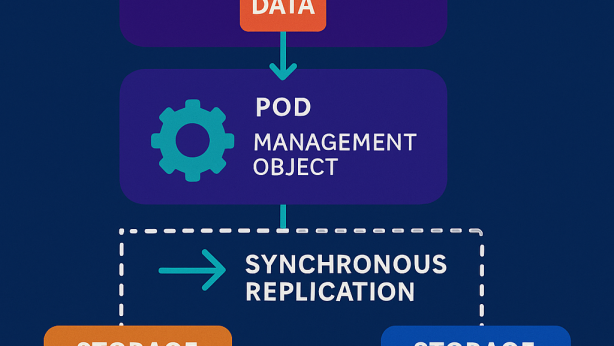GENERATIVE NEURAL NETWORK MODEL STYLE GUIDE MANAGEMENT

Invented by RAMOS; Gonzalo A., NG; Shiqian Rachel, HUNTINGTON; Andrew James, BANKS; Richard Malcolm, TROY; Adam D., YEH; Catherine, Microsoft Technology Licensing, LLC
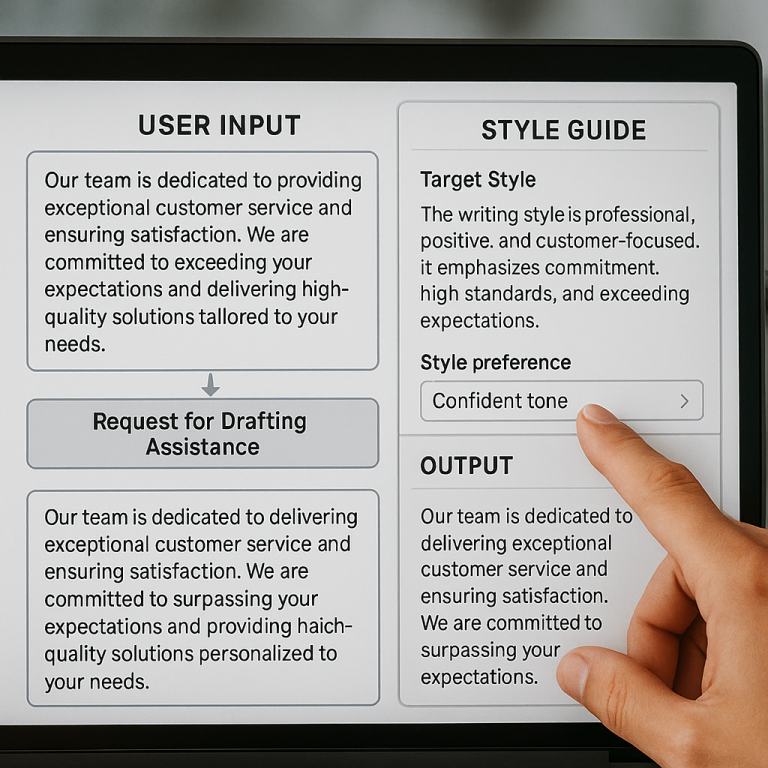
When you write, your words have a certain flavor. Maybe you like short sentences. Maybe you use a lot of jokes. But what if a computer could learn your style and help you write in it—every time? A new patent application shows a smart way to do just that. This post will help you understand what’s new, what came before, and how this invention changes how we write with the help of AI.
Background and Market Context
Writing used to be simple. People typed words, and that was it. Then came computers, then the internet, and finally, artificial intelligence. Now, writing is faster, but also much more complex. People want writing tools to help them not just check spelling, but also match their unique style. For example, a business person may want to sound formal, while a blogger wants to be fun and personal.
Today, millions of people use AI tools to help write emails, reports, blogs, and even books. These tools use “large language models” (LLMs)—very big computer programs that can read, write, and even chat. But there’s a problem. These tools don’t always sound like you. They often write in a bland, generic voice. That means if you like your writing to be warm and friendly, the AI might still sound cold and robotic.
Users face another challenge. Most AI writing tools ask you to write special instructions, called “prompts,” to tell them what you want. But writing the perfect prompt is hard. You might have to try many times before you get the right answer. And if you want the tool to copy your personal style, you may need to paste in a long sample of your writing each time.
As more people and companies use AI to write, the need for tools that can learn and keep your unique style has grown. This is important for businesses that need to keep their brand voice strong. It’s also important for anyone who wants their writing to sound like themselves, not like a robot.
Until now, most solutions have been clumsy. Some let you pick from a few preset styles, like “formal,” “funny,” or “concise.” Others let you paste in a writing sample, but they only use it once and forget it. Some tools can learn from your writing, but you can’t see or change what they learned. There’s no easy way to tell the AI, “I want more short sentences,” or “Please use more positive words.”
As a result, users are frustrated. They spend too much time editing AI-written text to make it sound right. Businesses fear losing their voice in a sea of sameness. Writers worry the AI will “take over” and erase what makes them special.
This new patent application steps in to fix these problems. It describes a system that lets you create, see, and change a “style guide” for your writing, powered by a smart AI. This means the AI doesn’t just guess your style once. It remembers, learns, and lets you tweak what it knows—so you stay in control.
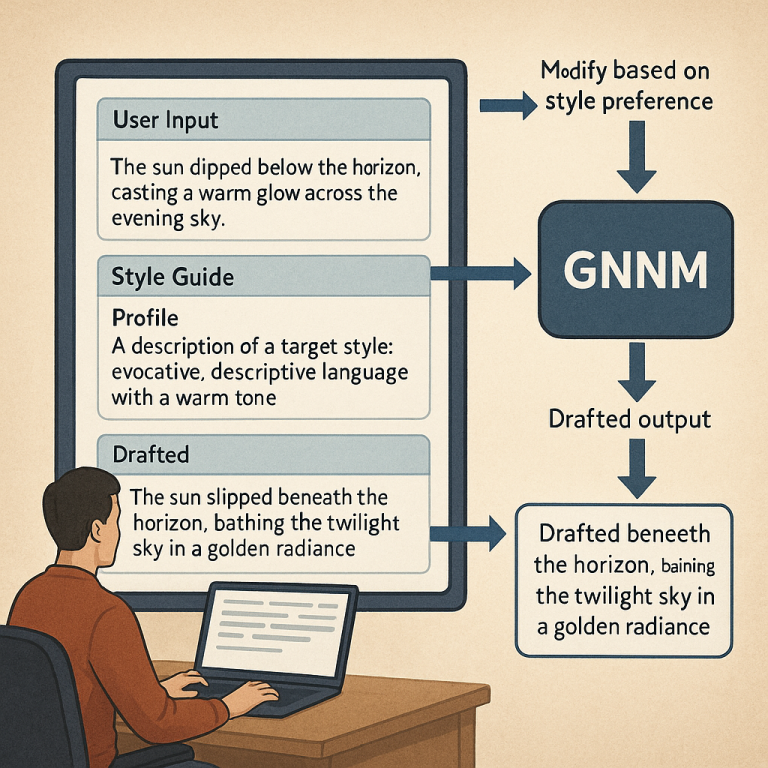
Scientific Rationale and Prior Art
Let’s look at how writing tools worked before—and why they weren’t enough. Early spell checkers just fixed spelling and grammar mistakes. Later, some tools tried to make your writing clearer or more concise. But these tools didn’t care about your style. They used rules, not learning.
Newer AI tools use huge language models. These models are trained on billions of words from books, articles, and websites. They can write in many ways. But getting them to keep your style is hard. You have to give them a sample, or write a detailed prompt every time. Worse, they forget what you want after each session.
Some tools have tried to add “style transfer.” You give them a sample, and they try to mimic it. But this is like painting with only a few colors. The AI may copy your sentence length or word choice, but it doesn’t know what really matters to you. And if your style changes—maybe you want to sound more formal in a new job—the tool can’t keep up.
Other tools have started using “style guides.” These are sets of rules or tips about how to write. For example, a style guide might say, “Use active voice,” or “Avoid jargon.” Some companies create big style guides and ask writers to follow them. But these guides are often just documents. The AI can’t read them directly, or change them as your writing changes.
A few tools let you edit AI-generated text and give feedback, like “make this more casual.” But the AI doesn’t remember your feedback for next time. You have to repeat yourself again and again.
In summary, the old ways had big limits:
– You couldn’t see or edit what the AI learned about your style.
– The AI couldn’t change as your style changed.
– You had to write long prompts or paste samples every time.
– Feedback was forgotten after each use.
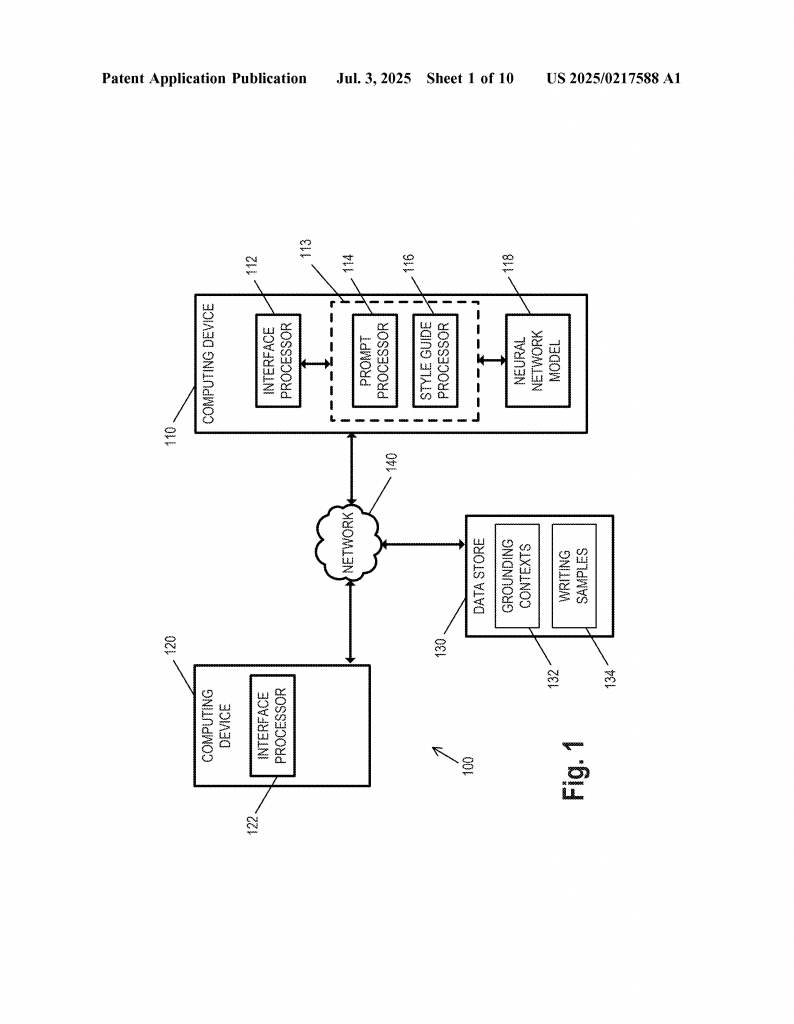
This patent application is different. It lets you:
– Build a profile of your style, which you can see and change.
– Give feedback that the AI remembers.
– Mix styles from many samples (even from other writers).
– Update your style guide as your writing evolves.
– Keep everything in one place, inside the writing tool.
Technically, the invention uses a “generative neural network model” (like an LLM) to read your writing, build a style guide in plain language, and use it to guide future text. You can edit the style guide, highlight text you like or dislike, and the tool adjusts the guide for you. This keeps your AI writing helper in sync with your real style.
By making the style guide visible and editable, the system puts control back in the hands of writers. It’s like having a coach who listens, learns, and helps you get better—without ever taking over.
Invention Description and Key Innovations
So, how does this new style guide system actually work? Let’s walk through it step by step, in the simplest way possible.
First, you open your writing tool. You see a simple screen, with your documents and something new—a “style guide” section. When you want the AI to write in your voice, you pick a writing sample. This could be something you wrote, or even a favorite article, book excerpt, or blog post. You can pick one, or many.
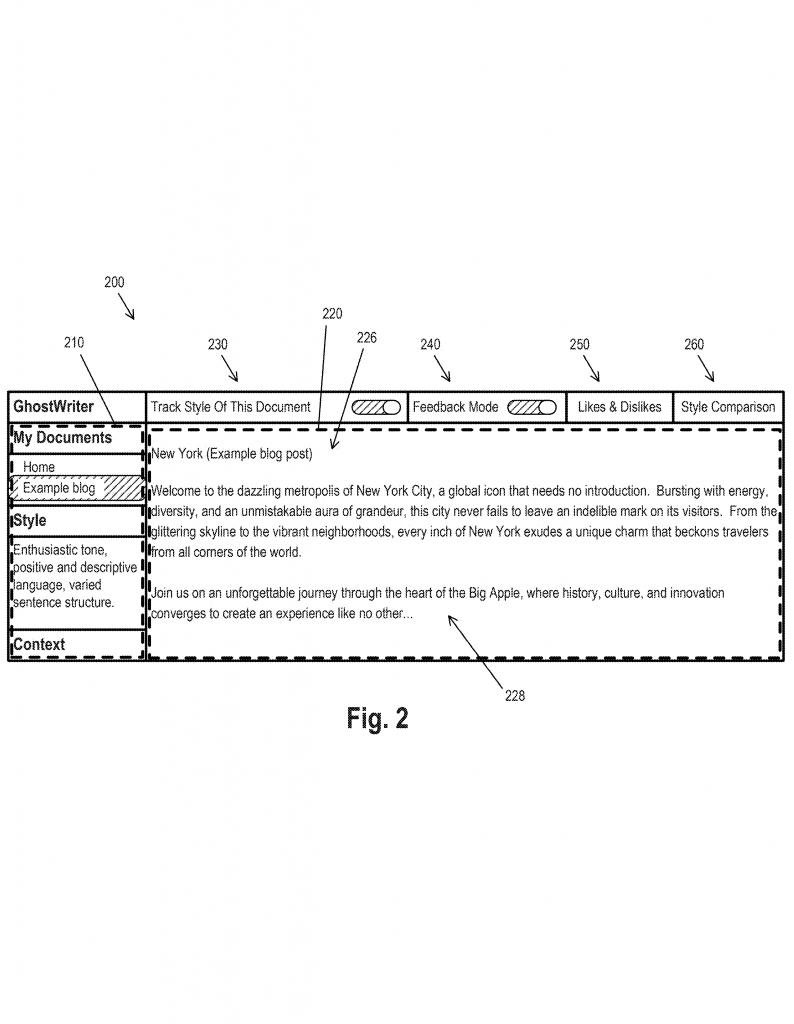
The tool takes your sample(s) and uses a smart AI model to “read” them. It looks for things like sentence length, word choice, tone, and more. Then, it creates a “style guide.” But instead of a boring list of rules, the style guide is written in clear, plain language. For example, it might say:
“This style is friendly, with short sentences and lots of positive words. The writing uses simple language, and often starts sentences with questions. The voice is active. Humor is used in every few paragraphs.”
This style guide is shown to you in the tool’s editing window. You can read it, change it, or add your own rules. Maybe you want to say, “Make jokes more often,” or “Use even shorter sentences.” You just type your changes, and the AI updates its understanding.
As you write or ask the AI for help, the tool uses your style guide to shape its output. If you’re writing a report, and you want it to sound like your usual work, the AI follows your rules. If you want to switch to a new style (maybe a mix of two samples), you can do that too. The tool can make a “hybrid” style guide, mixing elements from both.
What if your style changes over time? Maybe you start using more formal words, or your sentences get longer. The tool can watch for these changes. If it notices your writing is drifting away from your old style, it can ask if you want to update your style guide. Or, it can update it automatically—if you want.
You can also give quick feedback on the fly. If you like how a sentence sounds, you can highlight it and tell the tool, “I like this.” If you dislike something, you can say so. The AI adds this feedback to your style guide, so it keeps getting better at matching your taste.
If you want to see what has changed, the tool gives you an easy comparison. You can see what’s new in your style guide, what’s been added, or what rules have changed. This helps you keep track of your own writing growth.
All of this happens inside the writing tool’s simple interface. You don’t need to know anything about AI, programming, or prompt engineering. You just write, give feedback, and watch your AI helper learn with you.
For businesses, this means brand voice can be managed and shared easily. Teams can use the same style guide, or create new ones for special projects. For solo writers, it means your unique voice is safe—and always at your fingertips.
On the technical side, the invention uses a special “intermediary” between you and the AI model. This part takes care of building prompts, sending them to the AI, and showing the results in your editor. It also stores your style guides and feedback, so nothing is lost between sessions.
If you want to see or edit your style guide, you can do it in plain language—no code needed. You can even add examples, like, “Use words like ‘exciting’ and ‘amazing’,” or “Avoid technical jargon.” If you want, you can lock your style guide to stop changes, or unlock it to let the system learn more as you write.
When you ask the AI for help, the tool sends your document, your style guide, and any other needed info to the AI. The AI uses all of this to write in your voice. When you get the output, you can edit it, merge it into your document, or ask for more changes.
To sum up, the key innovations include:
– A live, editable style guide written in natural language.
– Feedback loops that let you fine-tune your style (by highlighting text and giving likes/dislikes).
– Automatic or prompted updates as your style evolves.
– The ability to mix styles from many samples, even from other sources.
– Seamless merging of AI output into your documents.
– An easy user interface that keeps you in control at all times.
This isn’t just about smarter AI. It’s about putting the human—the real writer—back in the driver’s seat.
Conclusion
Writing is personal. Whether you are a student, a business owner, or a novelist, your style is yours. This new patent application shows a way for AI to help you—not replace you—while keeping your unique style front and center. With editable style guides, real-time feedback, and smooth integration into your writing tools, the future of AI-assisted writing is looking brighter, more personal, and more human than ever.
If you want your words to sound like you, not just another machine, keep an eye on this invention. The next time you open your writing tool, you might just find your own voice waiting for you—with a little help from AI.
Click here https://ppubs.uspto.gov/pubwebapp/ and search 20250217588.

